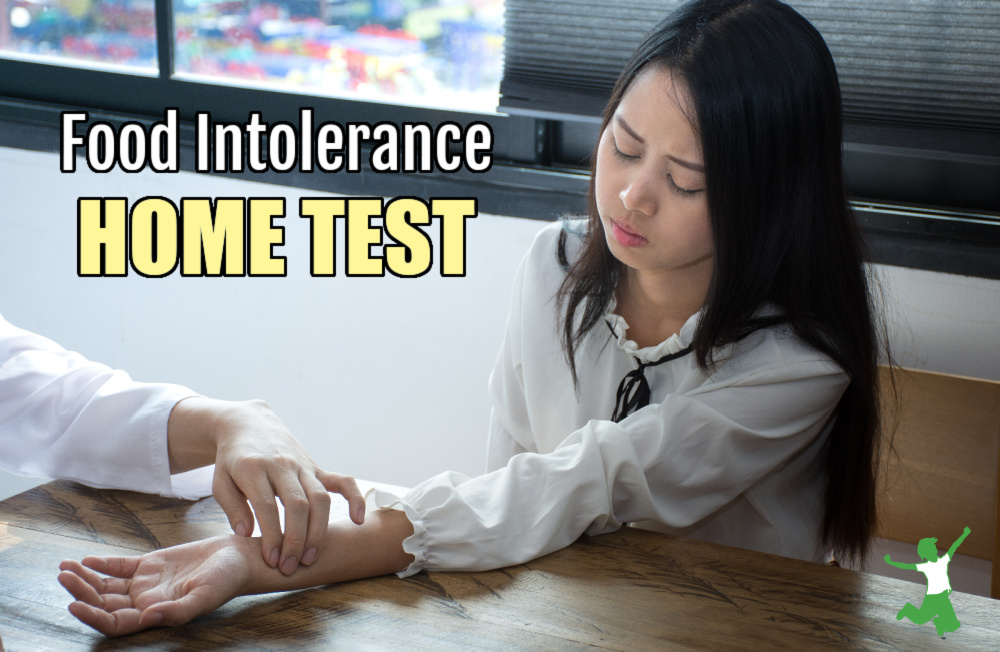Table of Contents[Hide][Show]
At-home allergy test to assess in four easy steps whether a particular food might be triggering intolerance or sensitivity issues. Not appropriate for severe situations that may trigger anaphylaxis.
Food sensitivities and allergies in children are clearly on the rise. Official estimates put the number at about 6% of children under the age of three. This sure seems low to me.
In my child’s preschool class, 10 of 12 children suffered from at least one food allergy!
When I went through elementary school in the 1970s, I barely remember one child with a food allergy of any kind.
Food Allergies, Intolerance, and Sensitivities
In years past, genetic predisposition was a clear and primary contributor to the development of allergies.
However, the modern-day tendency for children to eat just a few types of foods all the time like pizza, chicken nuggets, mac and cheese, boxed cereal and peanut butter sandwiches is a big reason for the skyrocketing allergy trend.
Exclusive eating requires a constant demand for the same types of digestive enzymes over and over. This can eventually lead to digestive exhaustion, food addictions, and biochemical disruptions.
Poor diet in infancy and childhood which is devoid or low in animal fats such as egg yolks, cream, and butter is also a contributor to the development of allergies.
Arachidonic acid and beneficial cholesterol in these nourishing animal fats promote the development of an intestinal wall that is strong with much integrity.
The nutritionless, carb-heavy, rancid vegetable oil-laden processed foods most allergy-prone children subsist on can lead to weakness in the intestinal walls. Another name for this is leaky gut syndrome.
These microscopic perforations allow partially digested food particles to enter the bloodstream. At that point, the trigger is set for an unpredictable mix of auto-immune and behavioral disorders.
What to do if you suspect a food allergy in your child or yourself but you wish to avoid expensive testing?
Home Pulse Test
As it turns out, it is rather easy to test for a food allergy at home.
Note that this is not appropriate for any situation where anaphylaxis might occur.
The four simple steps include the following:
- Avoid the suspected food for at least 4 days.
- Eat a moderate amount of the suspected food on an empty stomach. Consume no other food within the previous 2 hours (drinking water is fine).
- Measure pulse rate (beats per minute) before and 5-10 minutes after eating the food in question.
- Calculate the difference in pulse rate. Did you find a significant rise of more than just a few beats per minute? If so, then an allergy or intolerance is likely even if you do not identify any other symptoms.
Besides an increased or racing pulse, food sensitivities and allergies can be identified via rashes, fatigue, insomnia, headaches, joint pain, and even hoarseness.
How to Heal
Once one or more food allergies are identified, a diet such as GAPS would need to be followed.
Over a period of time, usually 18 months to about 3 years, the gut wall will heal and seal. At that point, offending foods can be gradually reintroduced into the diet.
If the allergies are not severe, simply eating a varied and best traditional diet may be all that is necessary to put them in remission. This means no refined or stimulating foods.
“Refined” and “stimulating” foods would include anything made with white sugar, white flour, rancid vegetable oils like canola or soy, sodium, and caffeine.
In addition, a variety of traditionally fermented foods and beverages like home-brewed kombucha help tremendously with supplying friendly bacteria and food enzymes to keep the intestinal tract in optimal function.
These vital foods help maintain the integrity of the gut wall. This prevents compromise where undigested foods spill into the blood and trigger symptoms of sensitivity or intolerance.
Prevention is the Best Policy
Ultimately, it is best to never have to “undo” allergies if at all possible.
Eating a nourishing, traditional diet while pregnant and breastfeeding and ensuring that growing children receive regular and sufficient quantities of optimal growth encouraging foods.
These include cream, butter, ghee, egg yolks, fish eggs, grassfed and organ meats for development of a sturdy intestinal system.
This is the best insurance policy against ever needing any sort of special diet to combat allergy or other autoimmune issues.
Reference
Nourishing Traditions, About Food Allergies and Special Diets









Leave a Reply